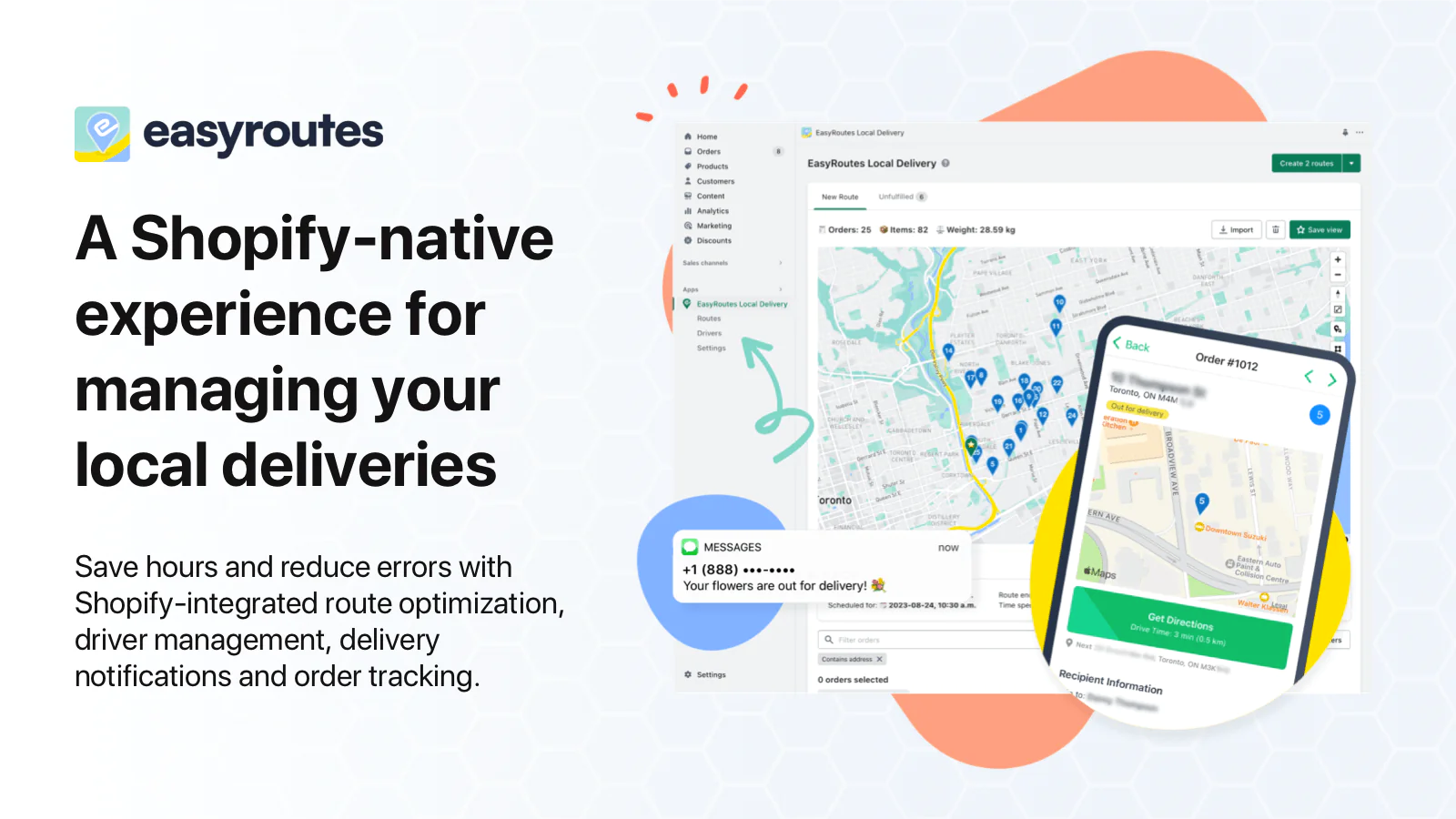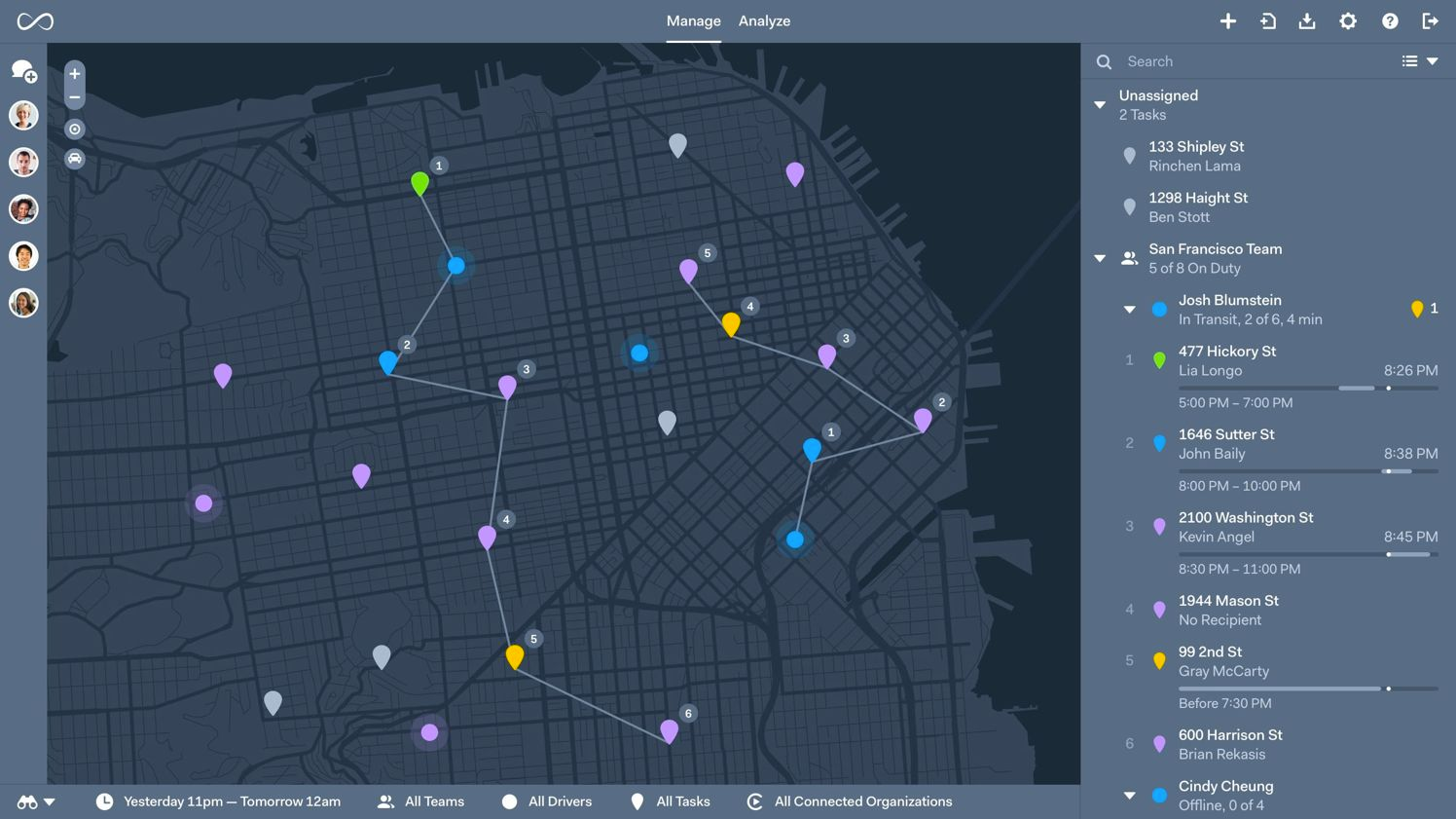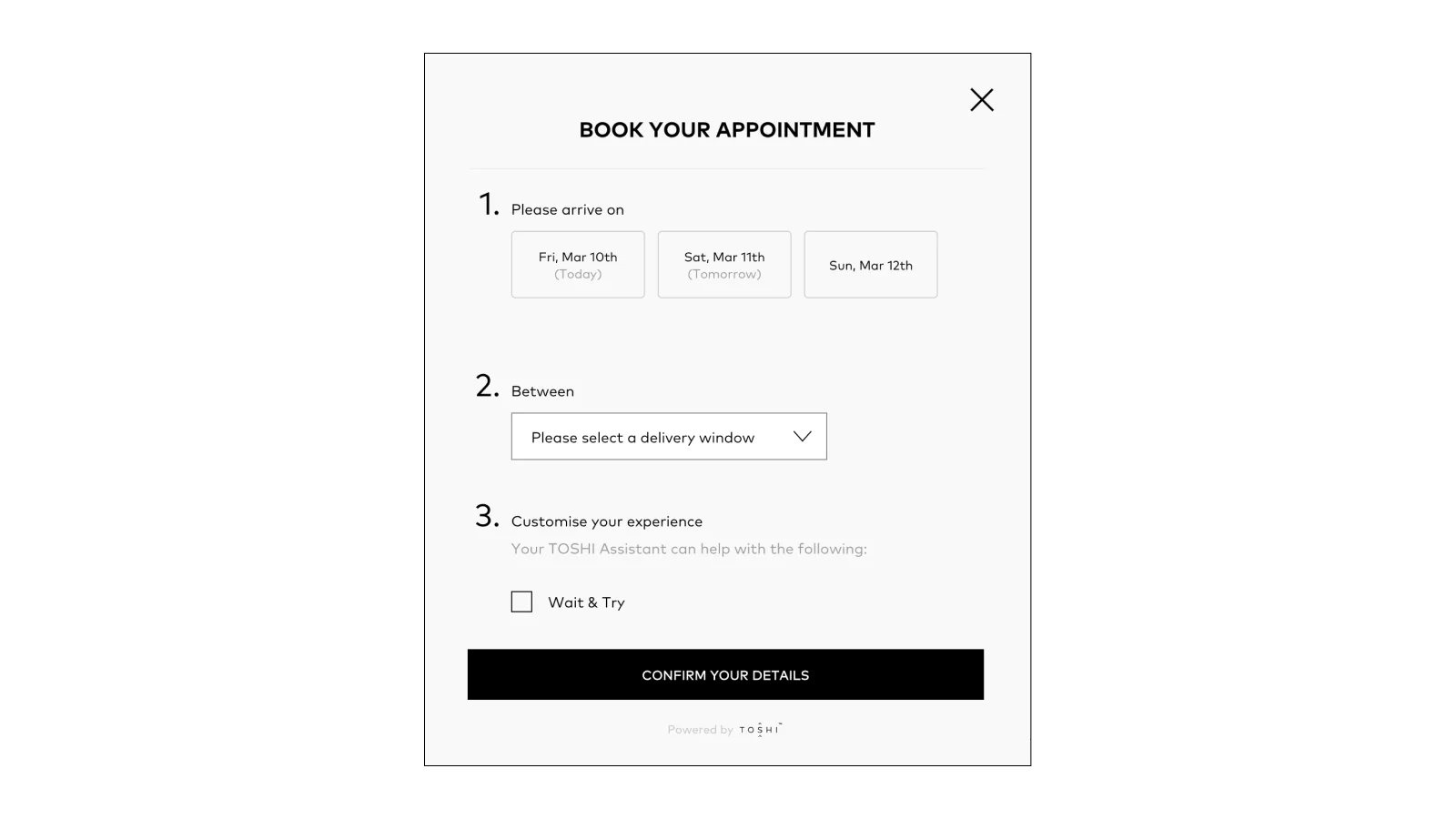Last mile delivery services are costly and complicated aspects of retail logistics, but also have the most visible impact on the customer journey and consumer satisfaction.
As consumers turn to ecommerce for more and more of their shopping needs, last mile delivery causes trouble in urban areas around the globe. Increasing parcel volumes means an increase in delivery vans entering cities and adds to an already staggering array of logistical and environmental nightmares.
What can a retailer do to deliver items as fast as possible and provide an excellent customer experience while staying profitable? This article will walk you through final mile delivery and how to optimize it for your retail business.
What is last mile delivery?
Last mile delivery includes everything associated with getting a product from the closest hub or warehouse to the customer. It’s not really only the last mile; it is a broad term used to describe the last leg of the delivery journey.
How much does last mile delivery cost?
Multiple delivery routes, packing requirements, waiting times at dispatch, and low load sizes are factors that influence both cost and speed of delivery. Last mile costs vary, with estimates citing between $10 and $50 per package—trending toward the higher end for heavy items. For comparison, failed deliveries cost an average $17.20 per instance.
Last mile delivery process
The last mile delivery process is simple in theory, but challenging to execute. Here are the main five steps in the process:
1. Customer places an order
The whole process is kicked off when a customer places an order, usually on your website but also in-store. This order is sent to your centralized order system, which processes and organizes the order accordingly. It’ll automatically route the order for last mile delivery, based on your parameters. Associated order data includes the customer address, products ordered, and shipping preferences.
2. Products arrive at your warehouse or distribution center
Your suppliers or manufacturers then ship the products in the order to your warehouse or distribution center. This is where the items are sorted, organized, and prepared for dispatch to their respective destinations.
3. Staff designates the order to delivery personnel
Your or your team then assigns the order to the appropriate delivery personnel. Delivery location, shipping preferences, delivery schedule, and the capacity of each vehicle are factored into this process.
4. Items are scanned onto the delivery vehicle
Before departing for their destination, the items are loaded onto the delivery vehicles. Each product is scanned and accounted for—you can often use real-time tracking to monitor exactly where the items are in their journey. It also syncs with your other systems to maintain accurate inventory management and minimize the risk of errors or lost shipments.
5. Courier receives proof of delivery from the customer
The delivery personnel completes the delivery. Here, they obtain a proof of delivery from the customer, either in the form of an electronic signature or a physical document.
Challenges of last mile delivery
- Slower travel speeds
- Lost deliveries
- Returns
- Environmental factors
Reducing the cost of last-mile delivery is a prime objective of retailers.
Slower travel speeds
Delivery points vary greatly in distance and drop size. Customers may be spread several miles apart, with only one or two items being delivered at each location. In urban areas, drop-off points may be closer together, but more subject to traffic congestion and delays.
As ecommerce has grown, the volume of deliveries has gone up at an exponential rate. This has compounded the complexity and amplified the inefficiencies.
💡 PRO TIP: Shopify in-store delivery is a set of flexible tools that let you offer shoppers in-store delivery options at checkout. Set delivery zones, add pricing conditions for each zone, manage and prepare orders for delivery, and create optimized delivery routes for drivers from Shopify.
Lost deliveries
Deliveries fail when people aren’t at home or at the final destination to accept delivery. Failed deliveries are expensive: time, energy, and resources are wasted. Business customers aren’t always able to accept delivery outside agreed time windows or without appointments.
When deliveries arrive late, customers complain and are likely to take their business elsewhere. When deliveries do arrive on time as promised, consumers are rarely notified of when to expect their package, creating frustration.
Returns
Reverse logistics is a major contributor to last-mile costs; the number of product returns is growing, especially in apparel, books and electronics.
The last mile logistics will still take place as usual, but then be repeated in reverse order, doubling the cost. Many retailers are using third parties to aggregate and batch their returns to reduce the number of trips.
💡 PRO TIP: With Shopify POS, you can accept exchanges for purchases made online or at another store location and your inventory will be updated instantly—no manual reconciliation required.
Environmental factors
Environmental issues are becoming a major concern for conscious consumers. Operating a transport fleet means there is pressure to reduce air pollution, noise emissions, and traffic congestion. This applies equally to a retailer’s own fleets, courier companies, and third-party logistics partners (3PL).
Compliance with regulations and achieving sustainability goals is vital, but it costs money. The trend toward alternative modes of freight transport such as electric and hybrid vehicles and smaller transit vans is growing. This should positively impact fuel costs and efficiency.
Optimizing last mile delivery
Let’s look at some ways to optimize last mile delivery for your store:
- BOPIS
- Route planning
- Proof of delivery
- Crowdsourced delivery
- Local delivery services
BOPIS
BOPIS stands for buy online, pickup in-store. Also known as “click and collect,” the BOPIS strategy is popular because it merges online shopping with in-person pickup.
Rather than worry about last mile delivery costs and shipping times, shoppers can pick up their order for free on their own time. It’s also profitable for retailers. When athleisure brand Gym+Coffee implemented a click and collect program during the pandemic, it saw 350% year-over-year growth.
Read more: What Is Buy Online, Pick-Up In Store (BOPIS) in Retail?
💡 PRO TIP: Set upin-store pickup in Shopify to start offering in-store pickup as a delivery option at checkout. Pay less on last-mile delivery, speed up fulfillment times on local orders, and drive more foot traffic to your stores.
Route planning
Route planning refers to creating cost-effective ways to get from one location to the next. Computing optimal routes manually is difficult, so route planning software solutions that combine multiple inputs are used to find the best delivery routes.
They take into account customers’ delivery windows, truck capacity, traffic congestion, and even weather, to minimize driving time and fuel spend. Drivers are directed to take the most efficient route possible, using real-time alerts.
Route planning software uses historical data, including the number of successful and failed deliveries, idle time, distance covered, time per delivery, and fuel used to identify inefficiencies and waste. Routes planned in advance can decrease the number of dispatchers needed and reduce the number of necessary drivers—both are cost savers.
Top route planning apps include:
EasyRoutes by Roundtrip (for Shopify)

The best routing app for Shopify merchants. This app connects right into your Shopify admin and lets you create routes, dispatch routes, and keep customers informed about their orders. EasyRoutes is free for up to 50 orders per month. The Lite plan starts at $15 per driver, per month.
Routific
Routific is a great route planning software for beginners. It features automated planning, live tracking, and route customization. Routific pricing starts at $49 per vehicle per month.
Route4Me
Route4Me is a good route management system for teams. It offers easy collaboration between members, real-time tracking, and route optimization. Pricing for Route4Me starts at $199 per month.
Proof of delivery
No matter how good your supply chain is, there’s always the chance a package won’t make it to the customer. Proof of delivery (POD) confirms that the customer received the package in good condition.
POD can be done two ways:
- Digital. Where customers provide an electronic signature upon receiving an order.
- Paper. Where customers sign a physical document after getting the package.
Digital PODs are evolving and go beyond the standard e-signature. Today, customers can “sign” for a packaging using:
- Bar codes
- Photo signatures
- Contactless signatures
- Digital ID verification
Implementing proof of delivery options is a good way to reduce returns and save money. It also upholds your legal requirements as a retailer and ensures piece of mind for your delivery partner and the customer.
Crowdsourced delivery
Crowdsourcing is a new method of last mile delivery. Stores who crowdsource delivery services hire contractors to deliver packages. Using their own vehicles, drivers pick up and deliver packages to your customers from your warehouse or order fulfillment center.
The benefits of crowdsourcing delivery services include:
- It offers a quick and easy way to offer same-day or on demand delivery.
- You can scale up or down as needed.
- You don’t need to build a delivery operation.
- It satisfies shoppers' desire for quick and convenient service.
Data shows that 8% of retailers already use crowdsourced delivery partners, and one-in-four plan to use them in the future. You can start by sourcing delivery service providers through apps like Postmates or TaskRabbit and test crowdsourcing for yourself.
Local delivery services
Another way to optimize last mile delivery is by offering local delivery services. When customers place an order on your website, someone from your store will bring it to their doorstep. It’s become a popular alternative to working with 3PLs or traditional couriers like FedEx or USPS.
Retailers from fashion stores to ice cream shops can offer local delivery, setting their own times and minimums to keep deliveries profitable.
The local delivery feature in Shopify makes it easy for you to offer local delivery at checkout. You can set your own delivery zones with separate pricing conditions, manage orders for delivery, and create optimized routes for drivers.
Learn more: How to Add Local Delivery Service to Your Store to Increase Sales
Tech stack
If you really want to optimize your last mile delivery process, you’ll want to get the technology to support it. In addition to the route planning software mentioned above, you might consider the following tools and platforms.
Onfleet

Onfleet is a last mile delivery management platform with features designed to streamline the entire delivery process, ensuring efficiency, transparency, and customer satisfaction. Optimize delivery routes, assign tasks to drivers, and track deliveries in real time through an intuitive dashboard. The platform also has route optimization features. Onfleet also has a customer-facing tracking page, which you can customize for your branding. Pricing starts at $500 per month.
TOSHI

TOSHI is your self-proclaimed “hyper-local last mile partner.” It works on ecommerce sites and in brick-and-mortar stores, with features to help you provide a great customer experience. Shoppers can select a scheduled one-hour delivery window to receive their package, and you can add other TOSHI services to the experience. It leverages electric vehicles and public service infrastructure for carbon neutral deliveries. It also has a TOSHI Shopify app.
XpressRun

XpressRun is another last mile delivery provider to help you execute these workflows. It combines logistics management tools and integrations for a comprehensive platform to help manage orders and deliveries. It works with multiple carriers to provide same-day and next-day delivery options, partnering with platforms like DoorDash, Frayt, Roadie, and SkipCart. XpressRun also has a Shopify app for easy integration.
Last mile delivery trends
- Opening retail locations
- Robots and drones
- Micro warehousing
Opening retail locations
As shipping costs continue to rise, online retailers are moving toward opening pop-up shops or space in other stores. Traditionally, online brands like Allbirds and Warby Parker, have been experimenting with traditional retail for years.
The New York Times reports that smaller, direct-to-consumer brands are taking advantage of the trend, securing short-term leases and building brand awareness in specific neighborhoods. A retail store gives you more opportunities to cut back on last mile supply costs by offering flexible purchasing options like BOPIS.
💡 PRO TIP: Get funding within days with Shopify Capital and avoid lengthy application processes, paperwork, and credit checks. Get the funds you need to open a retail store and invest in staff, inventory, and marketing, and pay it off as a flexible percentage of your sales.
Robots and drones
Automation is one last mile trend that everyone is thinking about, particularly the use of robots and drones. Last mile drone delivery is expected to be worth $9.8 billion by 2030, with retail goods delivery as the most common use case. In the future, 16% of retailers anticipate using drones for delivery.
Economies of scale will lower costs compared to hiring human delivery drivers, and increase efficiency. Work with logistics partners that are thinking seriously about how to integrate autonomous vehicles and robots into their distribution networks.
Micro warehousing
Micro-warehousing, or micro-fulfillment, refers to using a network of small fulfillment centers in densely populated areas to reduce delivery times and improve sustainability. A multi-billion dollar industry, micro-fulfillment is poised to change the supply chain landscape, making it easy for retailers to offer ultra-fast delivery and simple store replenishment.
Whether that’s delivering from stores, building out your own network, or partnering with a 3PL that specializes in micro-warehousing, you’ll be able to reduce costs while enhancing customer satisfaction.
Improve costs of your last mile delivery
Customer expectations for same-day deliveries are at an all-time high, thanks to services like Amazon Prime. While businesses and individuals are enjoying fast-paced service, fulfillment and logistics companies are feeling the pressure.
There’s a constant push to make the increased volumes of “last-mile” deliveries both practical and profitable. By following the strategies in this article, you’ll be well on your way to improving the delivery experience and customer satisfaction in your store.
Read more
- Retailing in a Recession (+ 8 Tips to Stay Competitive)
- How Retailers Can Service Wholesale Clients Without Losing B2C Customers
- 10 Ways On-Demand Manufacturing Can Help Retailers Streamline Their Operations
- The Complete Guide to Purchasing Product Samples
- How to Reconcile Your Retail Store's Inventory
- A Simple Guide to Understanding Minimum Order Quantities (MOQs) in Retail
- What Retailers Need to Know About Days Inventory Outstanding (DIO)
- Open To Buy Definition + Formula for Retail Planning
- Demand Planning for Retailers: How to Prepare for an Influx of New Shoppers





